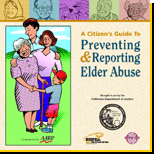In an interview with Healthline, U.S. Assistant Secretary for Aging Kathy Greenlee said she has an idea why. “Compared to other social movements, you have survivors who have led the charge. For the elderly, that's not the case," Greenlee said. "These people are frail and often have cognitive impairment. It's the rest of us who need to raise the voice for them.”
Numbers provided by the National Center on Elder Abuse, which is part of the Administration on Aging overseen by Greenlee, show that as many as 10 percent of elderly people suffer from abuse at least once per year. That number does not include financial exploitation, which is an increasingly common form of elder abuse.
...Elder Abuse Study in 2010 showed that 41 out of 1,000 elderly people surveyed reported “major” financial exploitation, a higher rate than other forms of abuse, including neglect and emotional, physical, or sexual abuse.
“People think [abuse] is isolated, and only in nursing homes,” Greenlee said. “In fact, it is broad and widespread, and it's often family members.”
Family Members Are Often Perpetrators
Sixteen years ago, the National Center on Elder Abuse conducted the only national study ever of the scope of elder abuse. That report showed that 90 percent of abusers are family members. Greenlee said it remains one of the fastest-growing aspects of elder abuse, a problem that is snowballing as America ages.
Read more: http://www.healthline.com/health-news/senior-elder-abuse-more-common-than-you-think-012714
If an elderly person becomes withdrawn or mistrustful, or develops a relationship with one trusted person to the exclusion of others, 'that's a real red flag.'
If a senior suddenly becomes secretive about finances, something might be awry.











No comments:
Post a Comment
All comments are reviewed before posting.